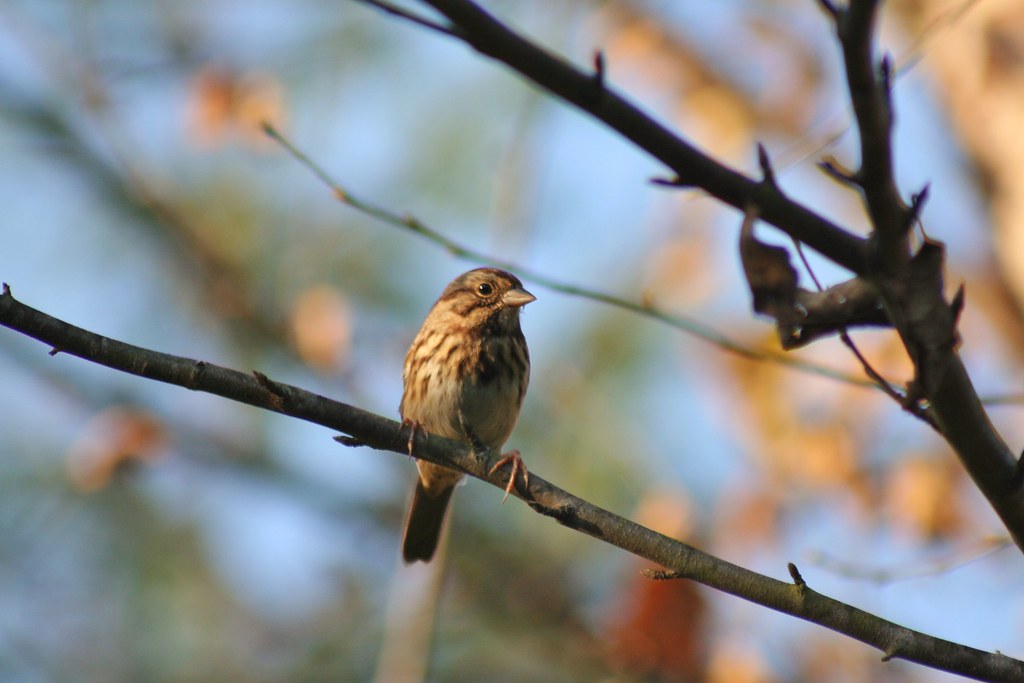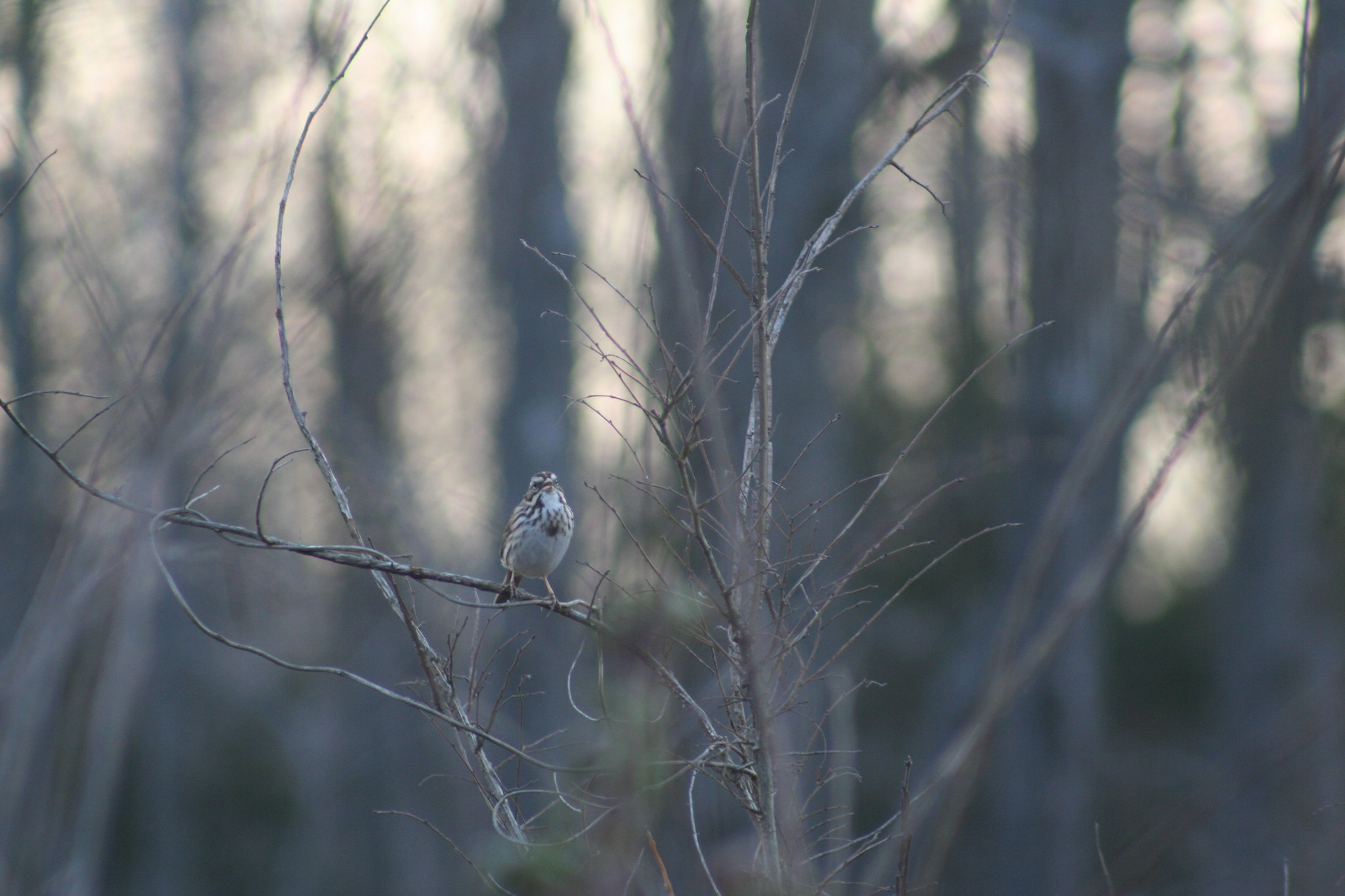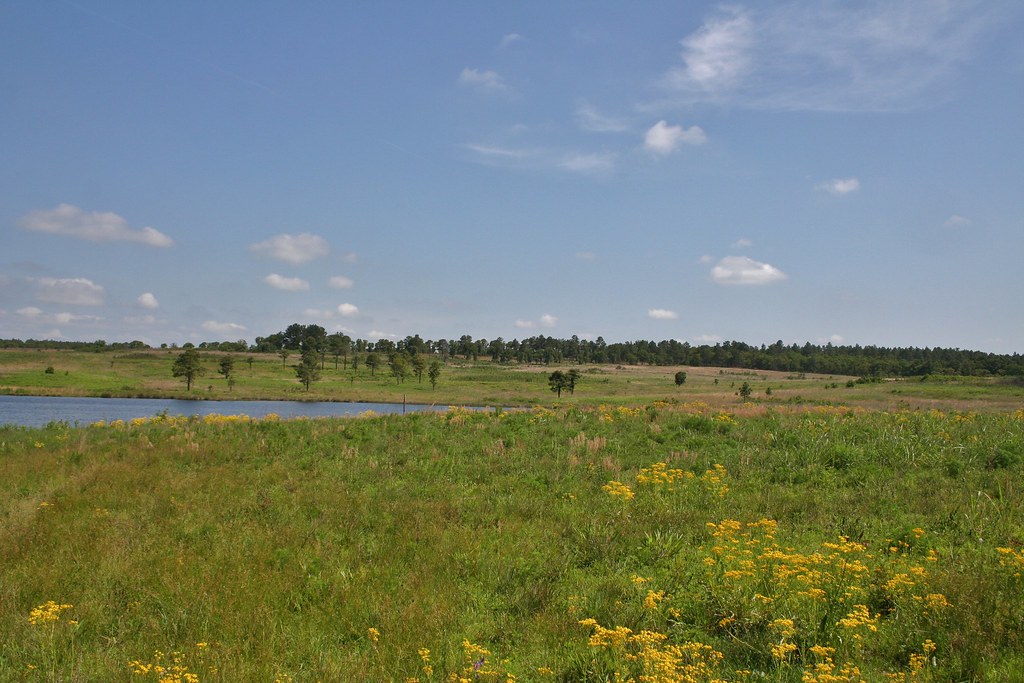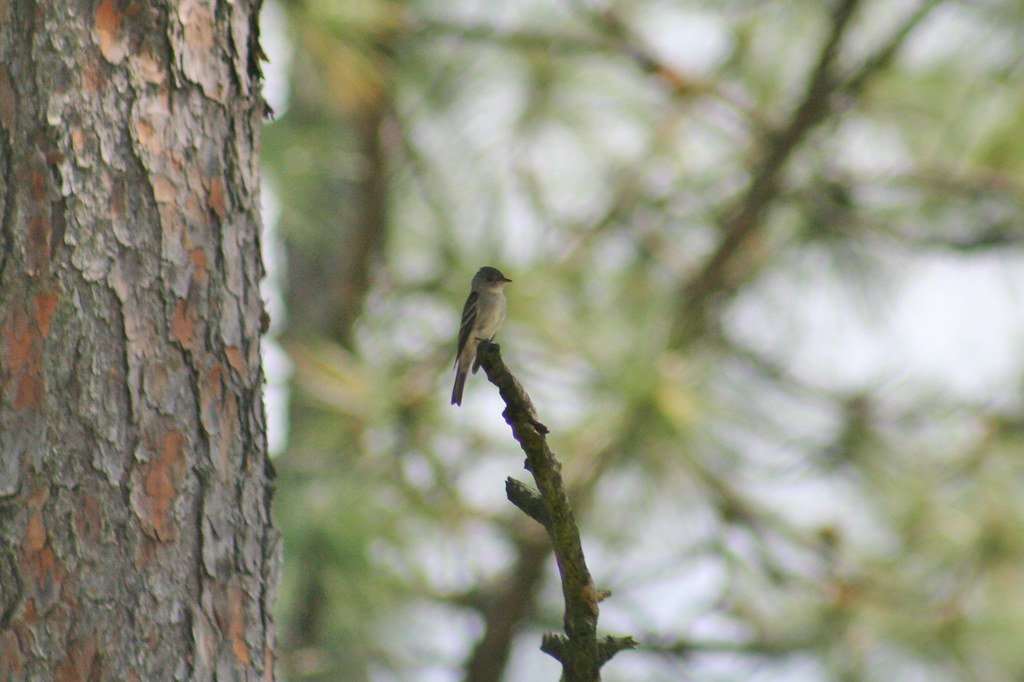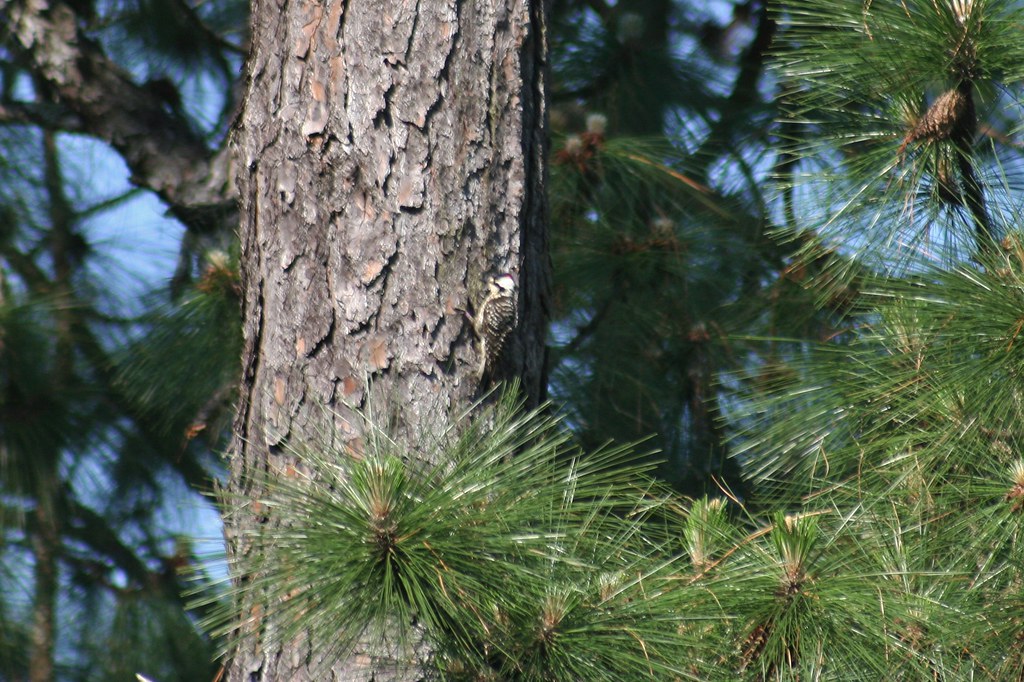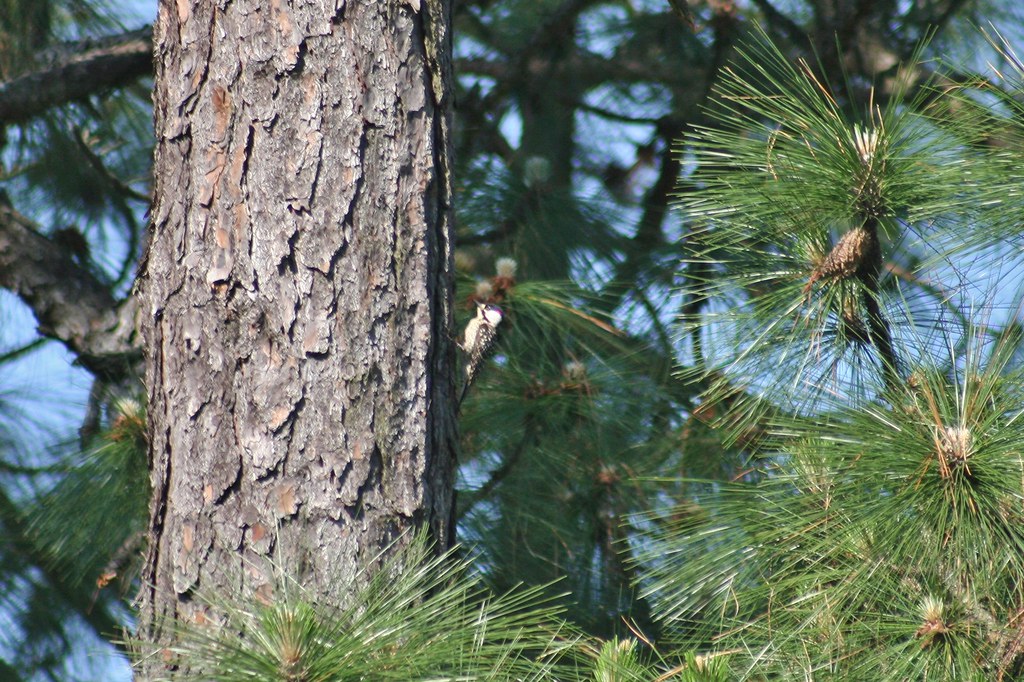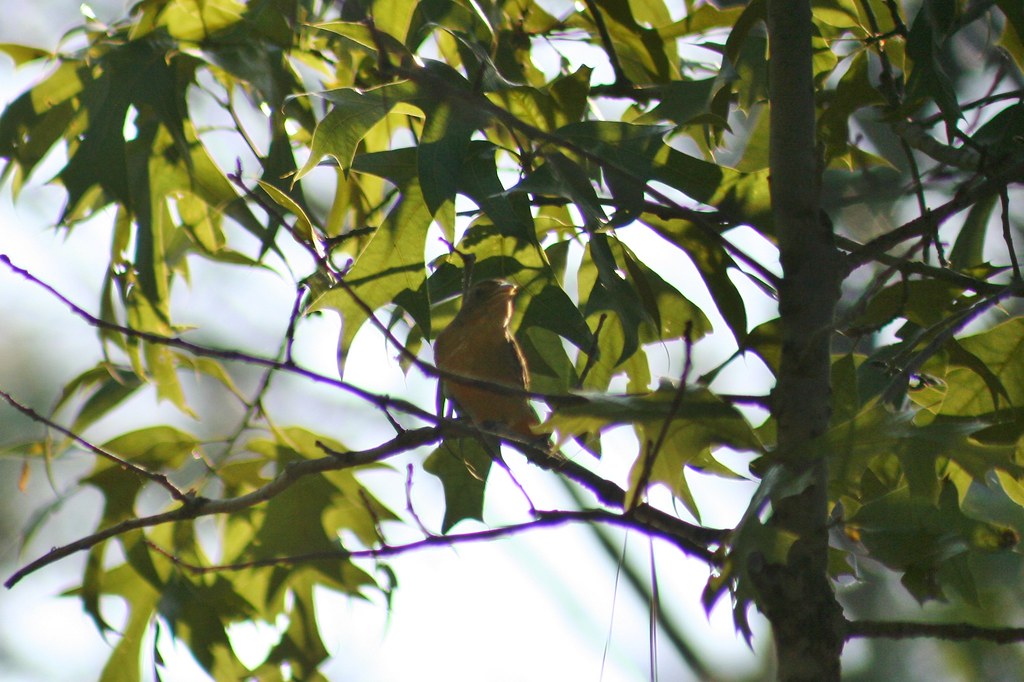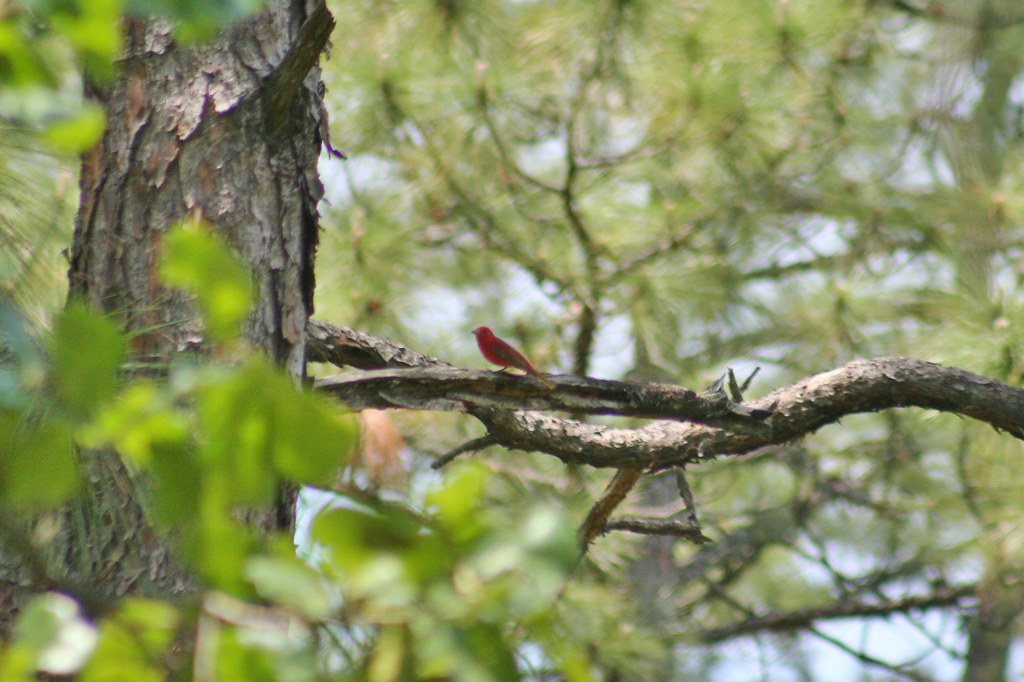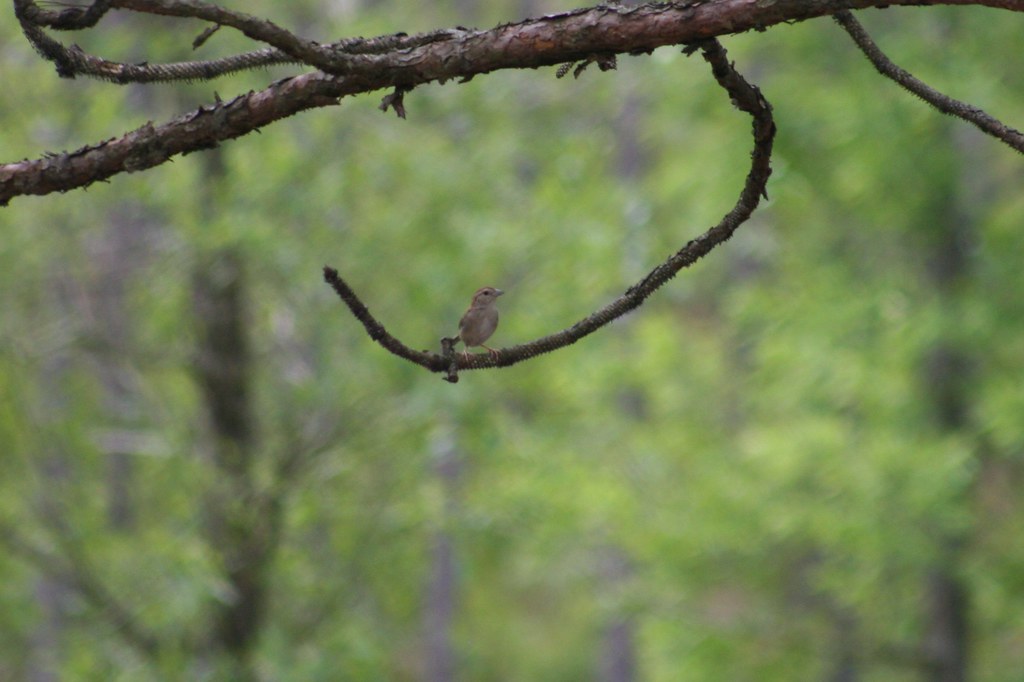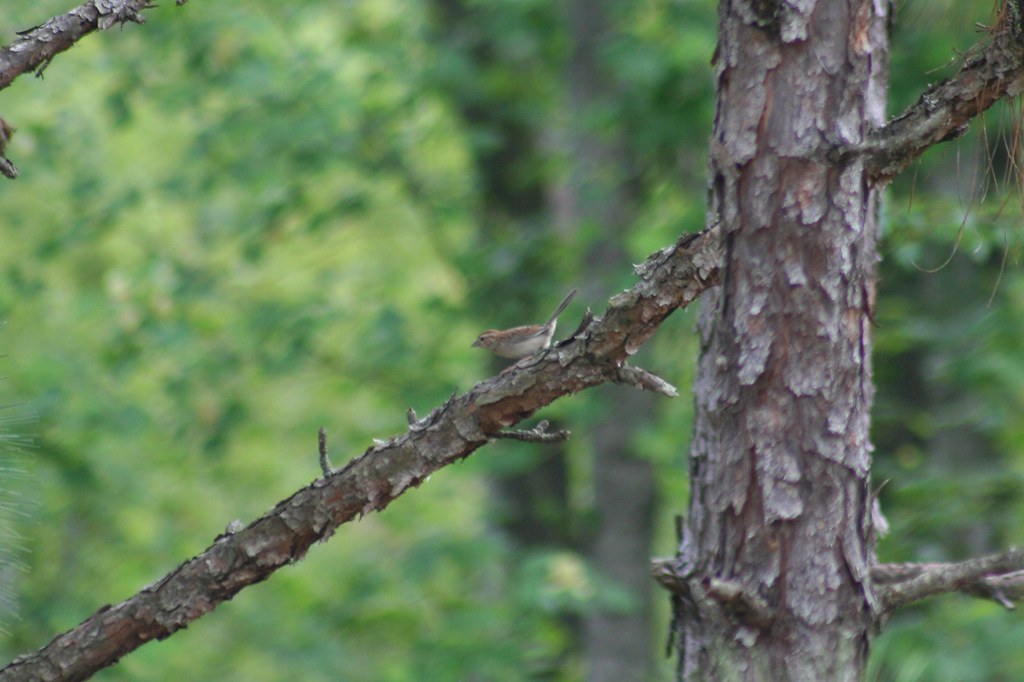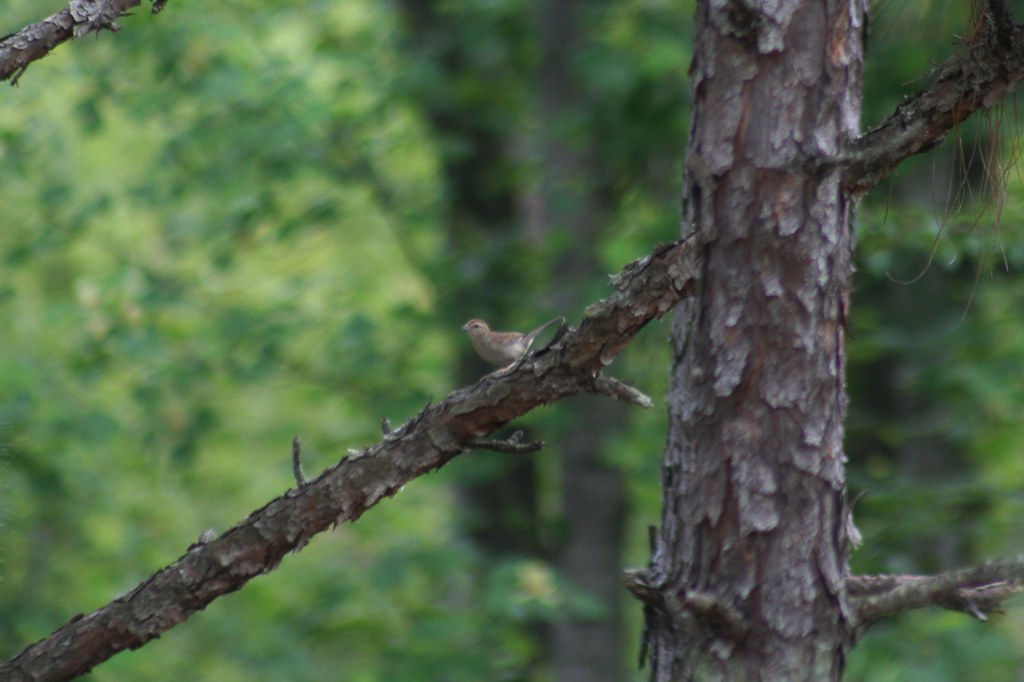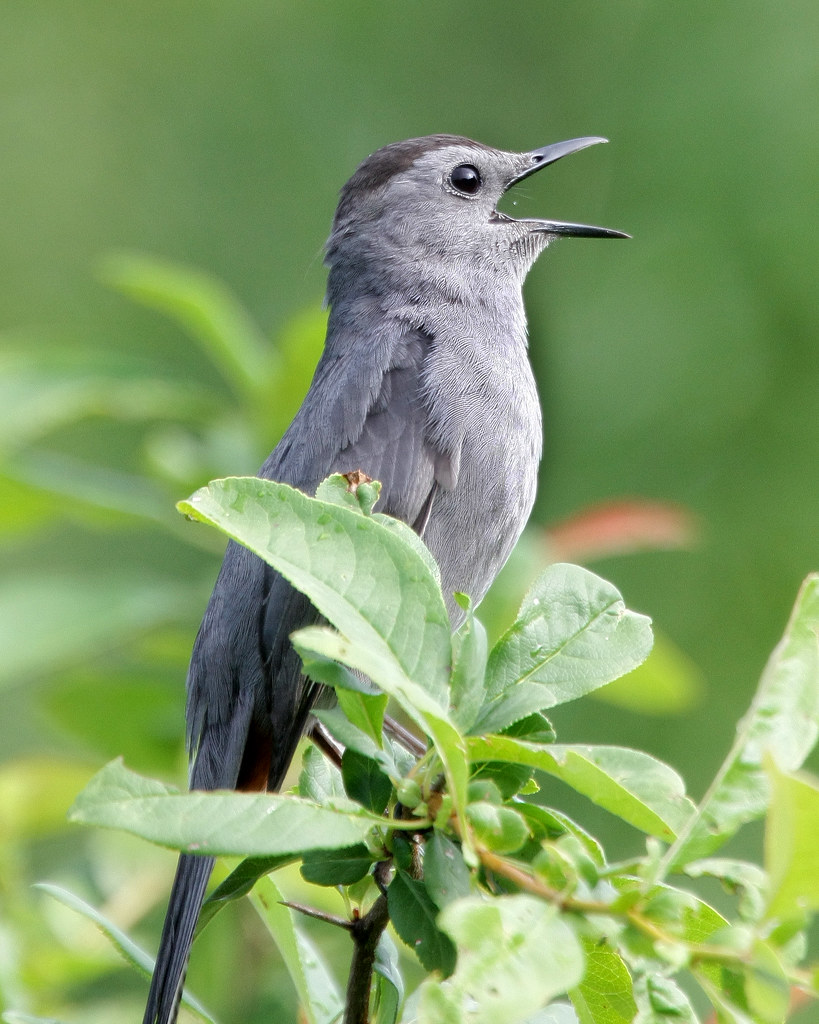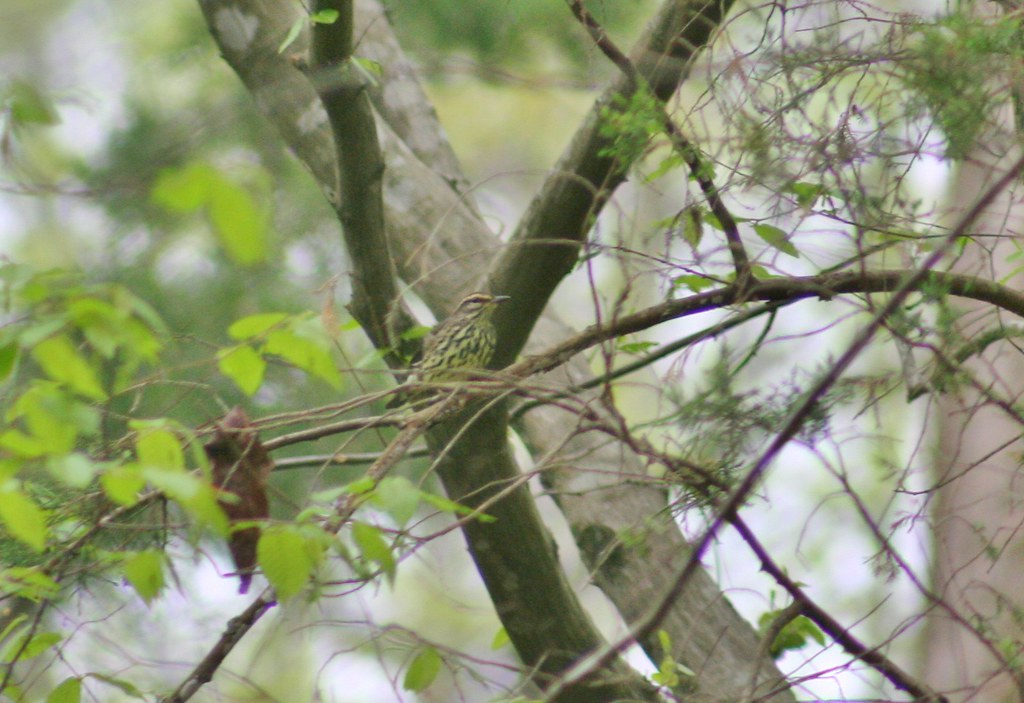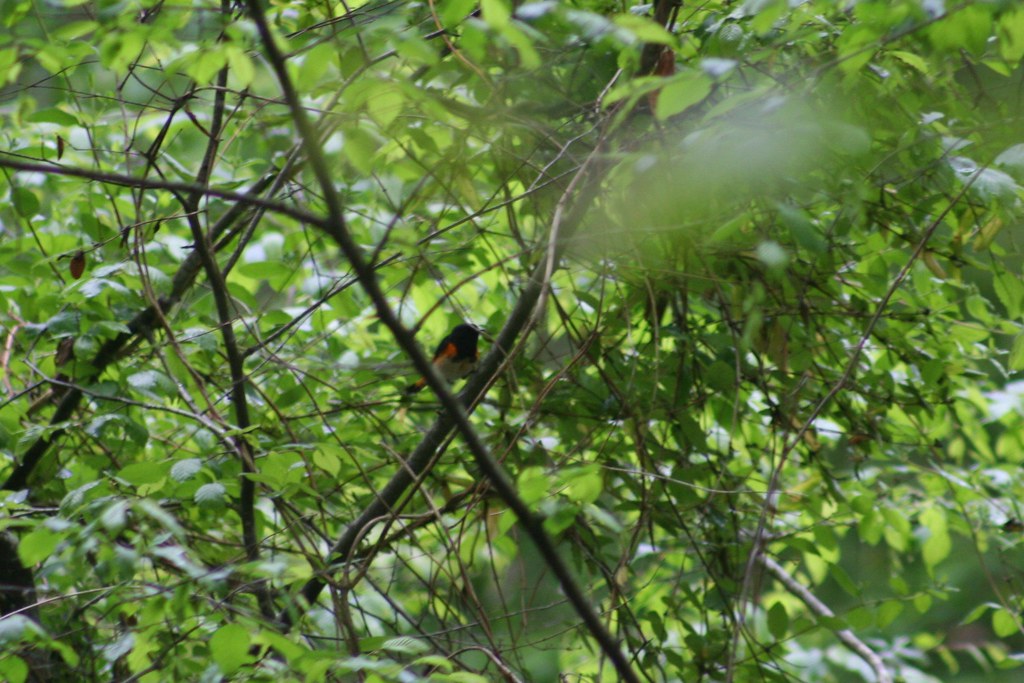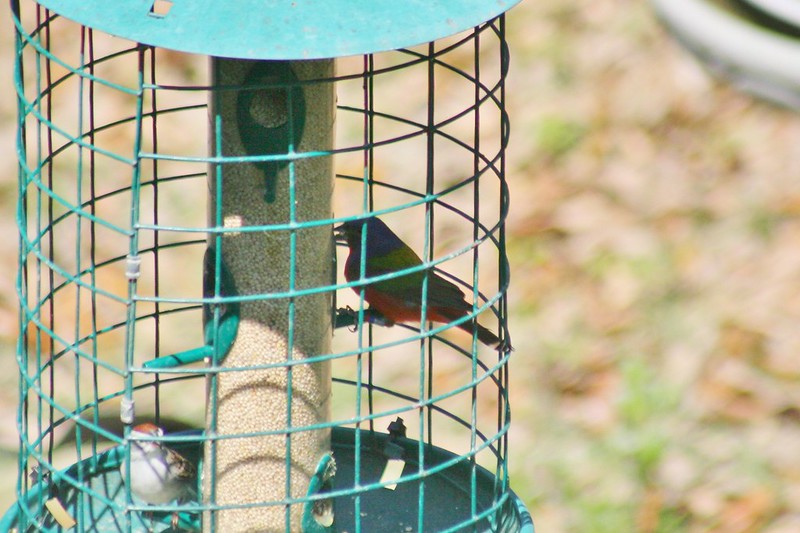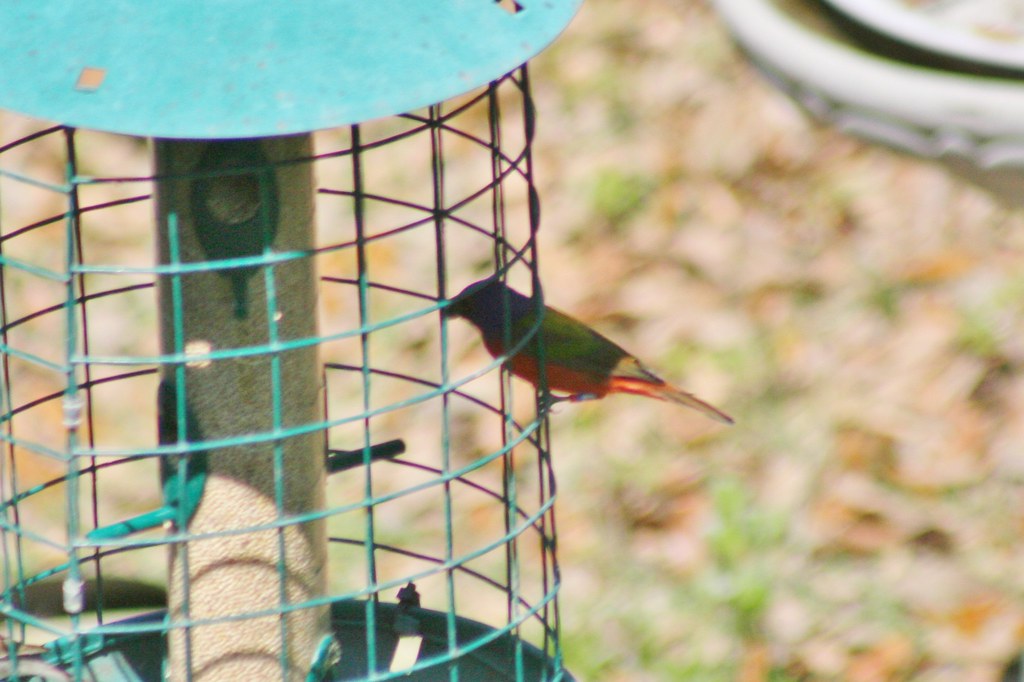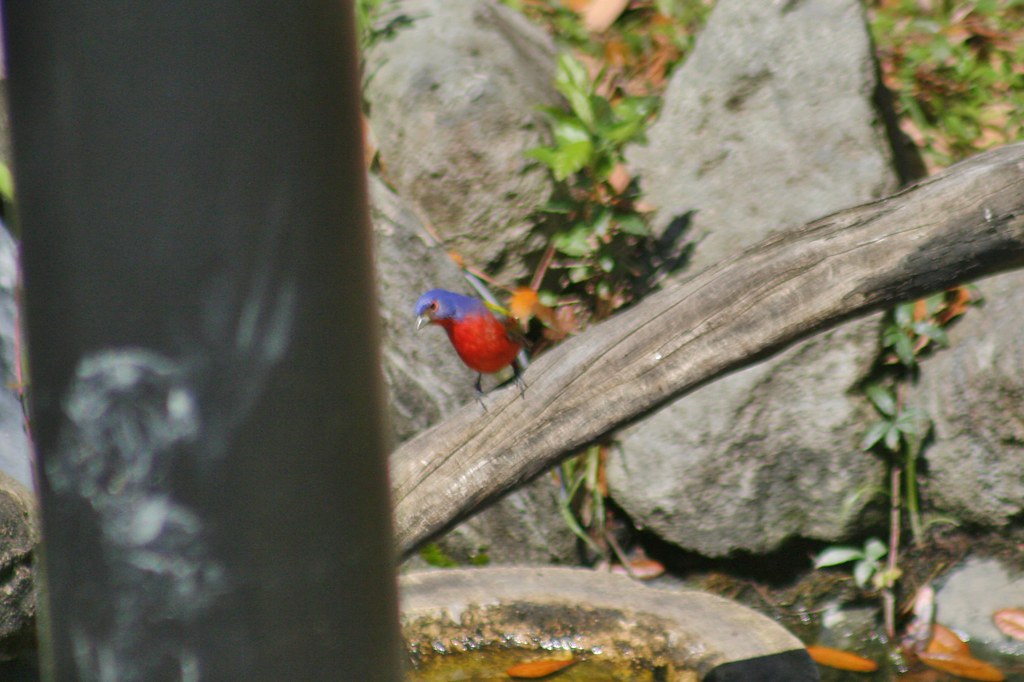Field Notes
Tuesday, August 18, 2015
A Break In The Hiatus...
Whew! I haven't posted here since May. My summer has been a busy one- this post is just the tip of the iceberg! For now, just know that Italy and Florida are amazing! Many posts to come!
Thursday, May 28, 2015
The Song Sparrow
The Song Sparrow (Melospiza melodia) is a common, streaky sparrow. Like its larger cousin the Fox Sparrow, it has a wide range, from seaside scrub to your backyard.
Let's be honest- Song Sparrows aren't up there on the "pretty" chart. They're brown and gray, streaky, and skulky. When you're out in the middle of a NWR and you see a little brownish thing flying low and landing in some scrub and you pish desperately, hoping for something good (like a Lincoln's or a Vesper or a Le Conte's or a Henslow's) and up pops the familiar spot-breasted, mustached bird letting out a curious seet? in response. They're downright annoying, like butterbutts in the spring, and most birders pass over them without a second glance.
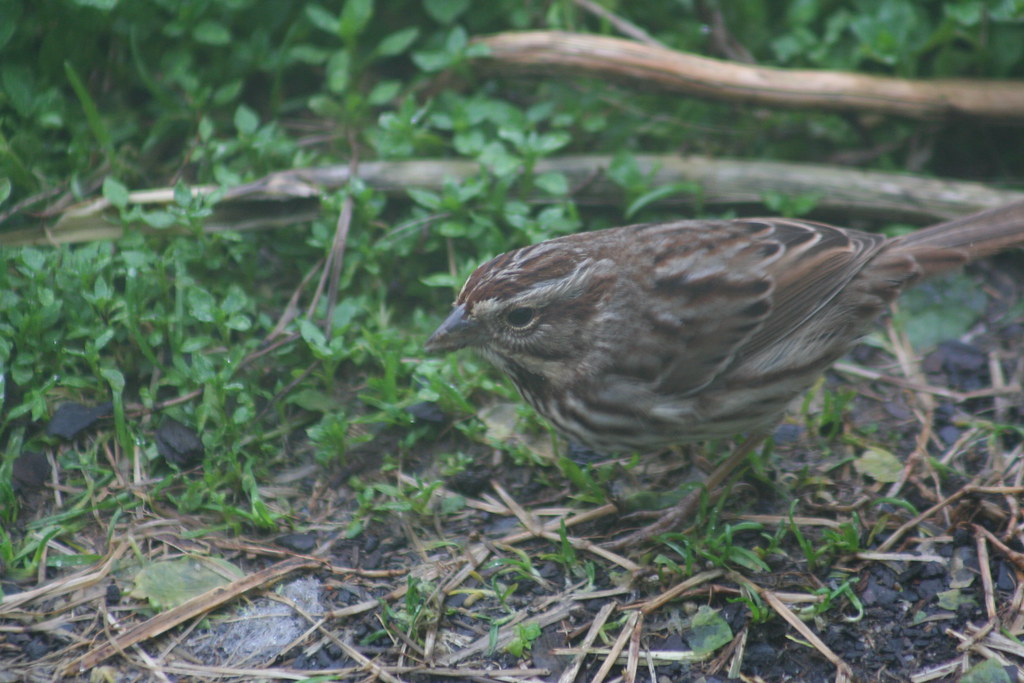 |
| It's okay, Song Sparrow, you're not hated by everyone! |
One thing I enjoy about Song Sparrows is variation in both song and color. I have noticed differences in songs from spots only 30 minutes from my home. The ones in Florida and South Carolina sound different than the ones in my yard. I have read that most sparrows sing the same song in a location; males with different songs stand out and are more harshly attacked by resident males. The song is a mix of clear and buzzy notes, and are pretty loud when you realize how small these little brown jobs are!
| From the Nat Geo guide and site. |
Song Sparrows come readily to feeders, preferring to feed on the ground with towhees and thrashers but willing to perch on feeders if they're hungry enough. Their favorite seed, like other ground dwellers, is white millet, but they aren't too picky and will settle for sunflower seeds or suet. It's because of this dietary freedom that they can survive the chilly winters while others, like warblers, have to migrate elsewhere to get their insects.
With all of this in mind, next time you see this successful, hardy sparrow, take a moment to appreciate it!
Happy birding!
Monday, May 25, 2015
The Sandhills
Ah, the Sandhills! Once a lot more common than it is today, this unique habitat used to stretch from southern Virginia all the way to east Texas! Dominated by Longleaf Pines, it depends on fires to keep the undergrowth low. Many birders know it as the place of Red-cockaded Woodpeckers, Bachman's Sparrows, Pine Warblers, Brown-headed Nuthatches, and Prairie Warblers. Besides a lot of bird life, other non-avians flourish here, including insects and carnivorous plants!
Carolina Sandhills NWR is a great spot for both birds and other fauna. The burned prairies, like the one above, make amazing habitat for chats, Orchard Orioles, yellowthroats, bobwhite, kingbirds, deer, rabbits, and countless numbers of plants! It's definitely a landscape you wouldn't expect to see in South Carolina.
Due to the poor, sandy soil, pitcher plants thrive here, gaining their nutrients from flies and other insects that fall into their pitchers. They also have interesting flowers.
Thanks to Will Stuart, our local plant expert (who happened to be at the refuge the same time as us), he found us those carnivorous plants plus a few extra goodies!
Alright, this is a bird blog, not a plant blog, so let's get to the birds.
It was super full of flycatchers!
LOTS of pewees!
Of course we saw Red-cockaded Woodpeckers! Bad quality, but I got pictures of a cockade!
We also saw a lot of Summer Tanagers, including a male and his mate...
...and an unusual male, probably in his second year. He had olive/yellow primaries and retrices.
All of these birds are good, but the crown jewel was...
BACHMAN'S SPARROW!
This bird gave us very good views, despite the quality of the pictures. It was a lifer bird for both Matt and I and now currently one of my favorite birds! You can listen to a recording here: http://www.xeno-canto.org/243607
It was a great experience and increased my love for the Sandhills- there's nothing else quite like it!
Carolina Sandhills NWR is a great spot for both birds and other fauna. The burned prairies, like the one above, make amazing habitat for chats, Orchard Orioles, yellowthroats, bobwhite, kingbirds, deer, rabbits, and countless numbers of plants! It's definitely a landscape you wouldn't expect to see in South Carolina.
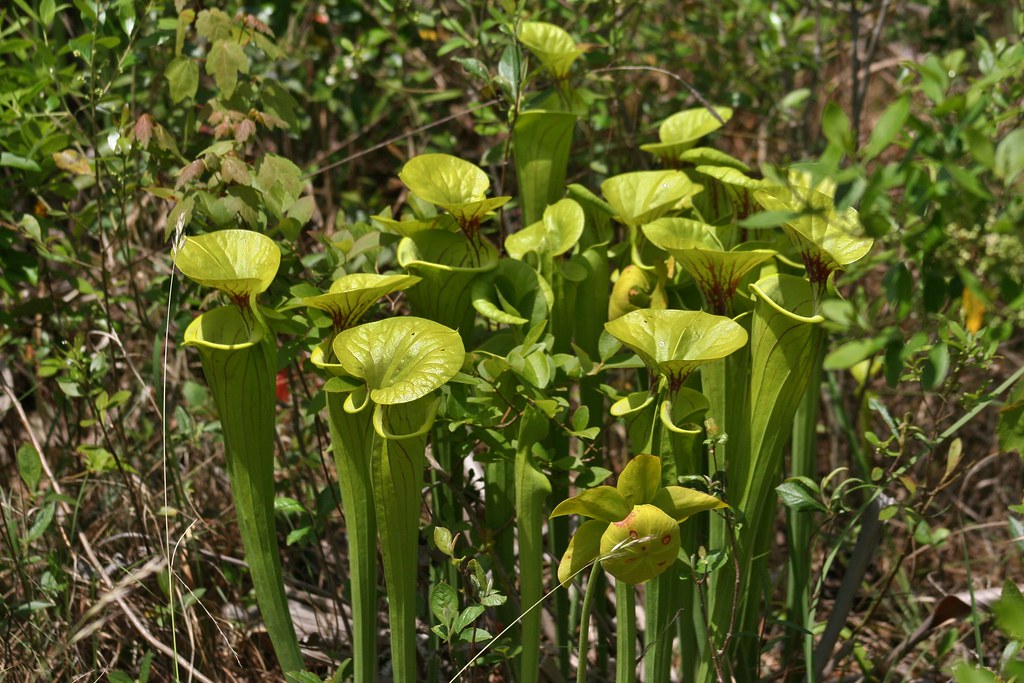 |
| Yellow Pitcher Plant |
 |
| Yellow Pitcher Plant Flower |
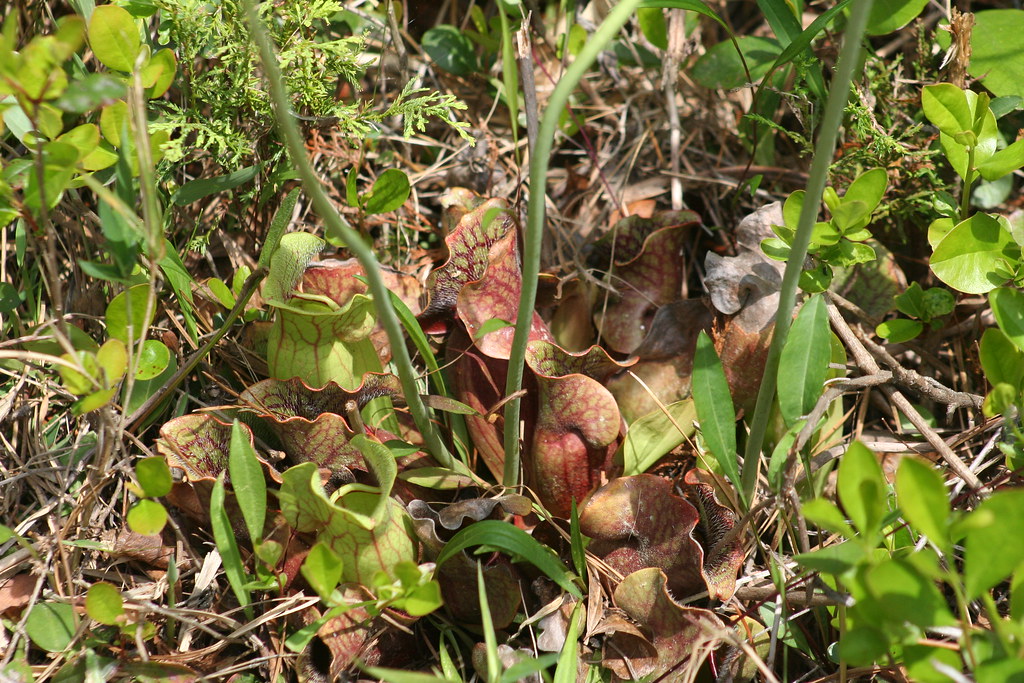 |
| Purple Pitcher Plant |
 |
| Purple Pitcher Plant Flower |
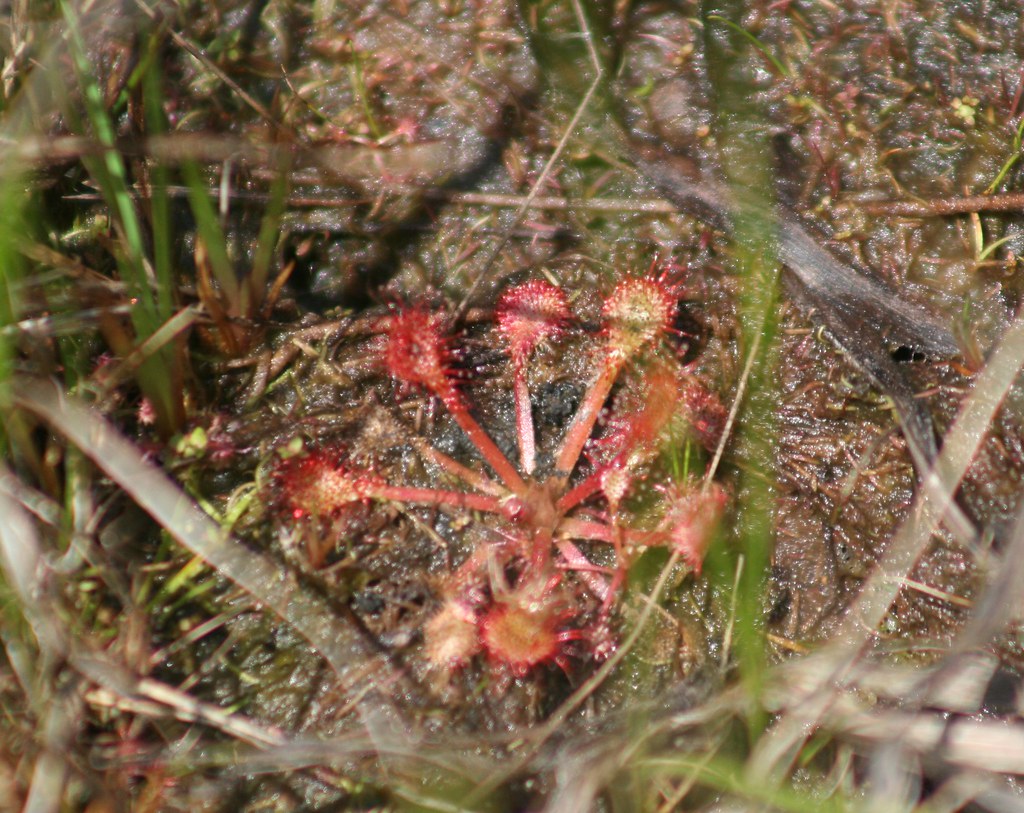 |
| Sundew |
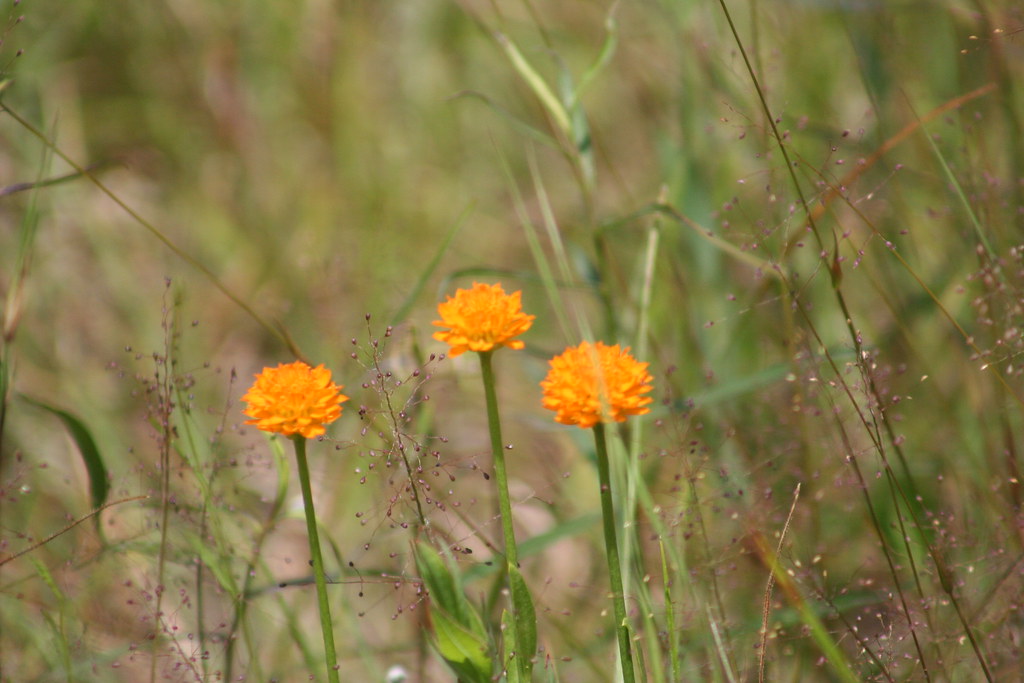 |
| Orange Milkwort with Purple Love Grass |
 |
| Snakemouth Orchid w/ Purple Love Grass |
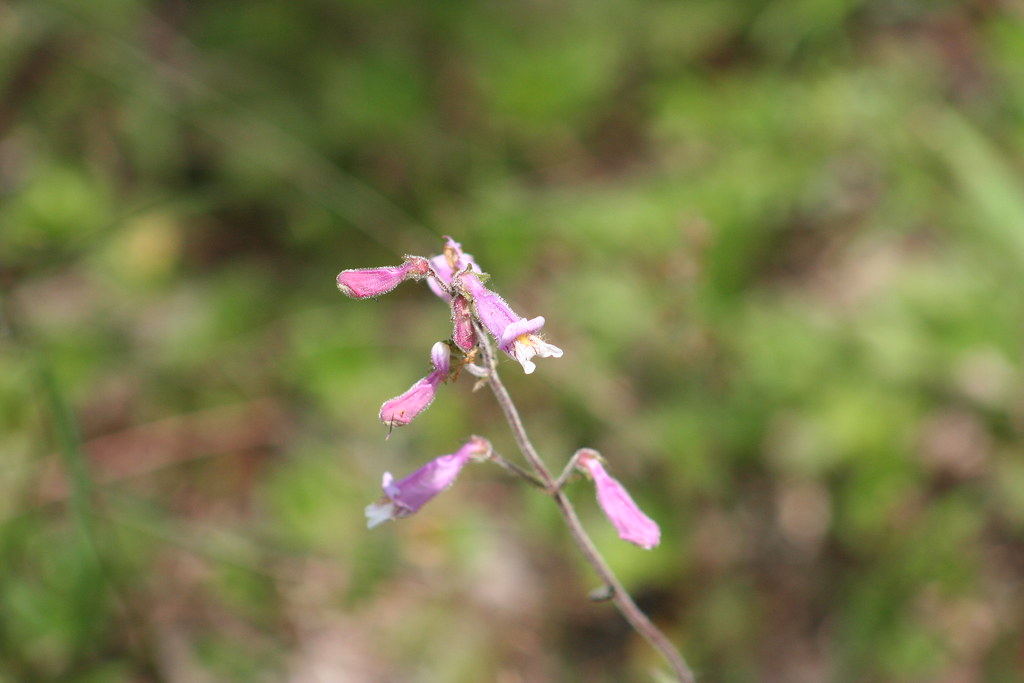 |
| Hairy Beardtongue |
 |
| Palamedes Swallowtail nectaring on Clasping Milkeweed |
Alright, this is a bird blog, not a plant blog, so let's get to the birds.
It was super full of flycatchers!
 |
| Eastern Kingbird |
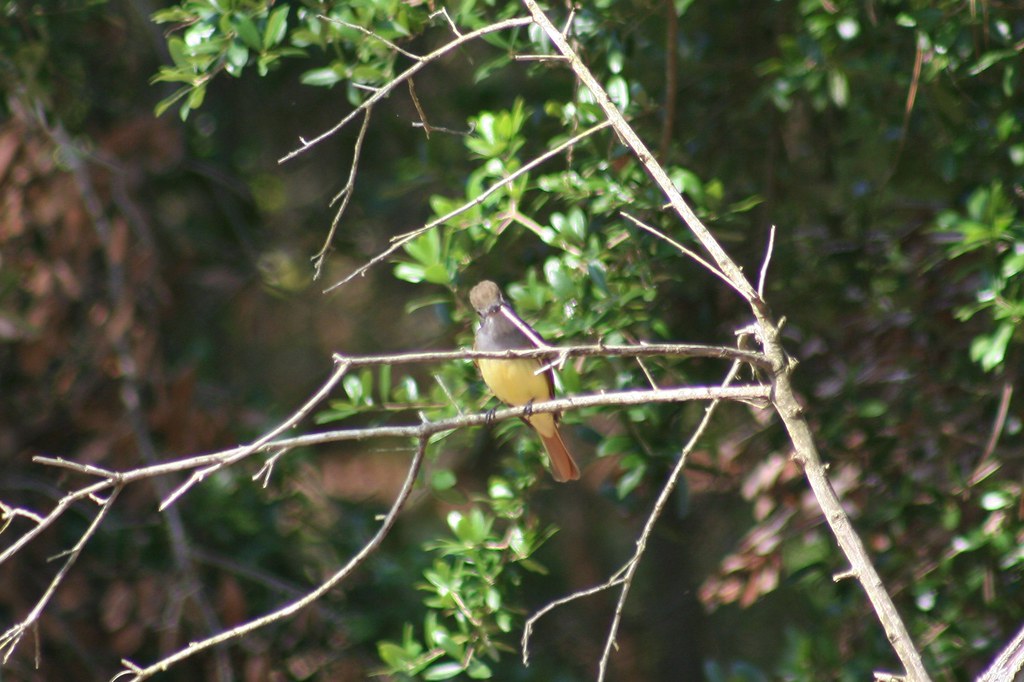 |
| Great Crested Flycatcher |
Of course we saw Red-cockaded Woodpeckers! Bad quality, but I got pictures of a cockade!
We also saw a lot of Summer Tanagers, including a male and his mate...
...and an unusual male, probably in his second year. He had olive/yellow primaries and retrices.
All of these birds are good, but the crown jewel was...
BACHMAN'S SPARROW!
This bird gave us very good views, despite the quality of the pictures. It was a lifer bird for both Matt and I and now currently one of my favorite birds! You can listen to a recording here: http://www.xeno-canto.org/243607
It was a great experience and increased my love for the Sandhills- there's nothing else quite like it!
Friday, May 8, 2015
The Ballad of the Catbird
I am in a Creative Writing class in which we have to write poetry... including ballads. A ballad is a poem in quatrain format, with an alternating rhyme scheme, that is supposed to tell a story. Here is the story of the catbird.
There once was a bird, dapper and gray
With a rump of russet, a cap of coal
And he meow’d constantly, every single day
Then one day the sun rose, he thought of a goal
His life was too boring, too lame, too bland
He became restless and soft
He decided to set off and find a new land
So with a flick of his wings he took off!
It was blistering and dry
The canyon echoed his meow!
The sun was so hot he could hardly fly.
He found a curious creature, and said ciao
It was named a quetzal
A brilliant green,
He insisted his name was Paul
And long did he preen.
The catbird thought how pretty Paul was
How could he hope to contend?
But he didn’t care, ‘cause
Paul was his new best friend!
The catbird left the canyons in search of some food
He left the desert sands for some berries
He met some waxwings who lightened the mood
And soon the catbird was merry
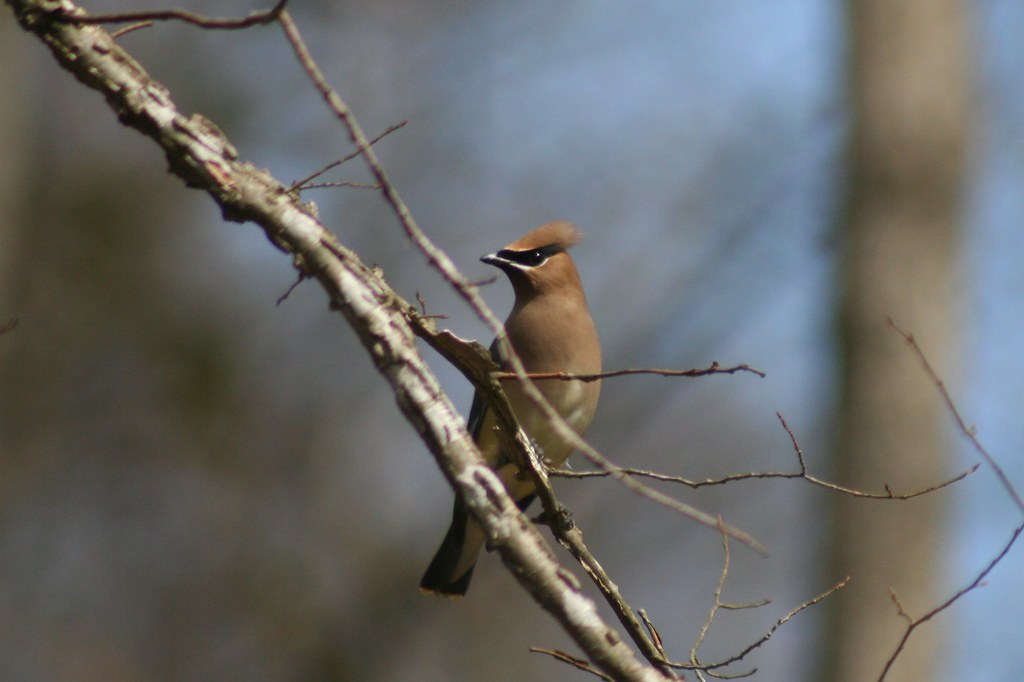 |
| See also here. |
After his night of drunken fruit
He left for the west
Where he found a bird who was off route
The bird said, in an accent, “I wish I had never left my nest!”
The bird, it explained, was a finch
It had been blown away from its home in a storm
He said that his home was over the ocean, a thought that made him flinch
He was hoping to get home before it got too warm
The catbird was curious of this cold-weather wonder
And asked if he could fly back home.
The little bird answered “I’m afraid of the thunder,”
“I will end up as part of the loam”
The catbird bid the finch farewell
Since he had places to go.
The catbird couldn’t dwell
Or else there would be snow.
South the catbird went, to tropical shores
He ended up on an isle
Where the ocean roars
And the humans smile.
The catbird had seen humans before
But never ones like this
These humans were watching him, for
A reason he missed.
These peculiar people roamed in packs
And pointed out every bird
The catbird watched these atypical acts
And didn’t utter a word.
The catbird heard a familiar mew
On this tropical patch
He sang his song- “I love you!”
And he found a lady catbird, his match!
The couple of catbirds left their tropical paradise behind
To find a place to settle down
With a perfect nest in mind
They settled near a human town
The first egg was laid, smooth and blue
Soon there was two, then three, then four
All an azure hue
In the bushes by a front door
The catbird was now happy with his life
He had soon-to-be young
And a great catbird wife
Meea! He happily sung!
Credit for pictures, in order:
"Grey Catbird" by Wolfgang Wander - self-made / http://www.pbase.com/wwcsig/image/44482560. Licensed under CC BY-SA 3.0 via Wikimedia Commons - http://commons.wikimedia.org/wiki/File:Grey_Catbird.jpg#/media/File:Grey_Catbird.jpg
"Eared Quetzal (Euptilotis neoxenus)" by Dominic Sherony - Flickr: Eared Quetzal (Euptilotis neoxenus). Licensed under CC BY-SA 2.0 via Wikimedia Commons - http://commons.wikimedia.org/wiki/File:Eared_Quetzal_(Euptilotis_neoxenus).jpg#/media/File:Eared_Quetzal_(Euptilotis_neoxenus).jpg
"Fringilla montifringilla -Poland -male-8" by mmlolek - JerUploaded by Snowmanradio. Licensed under CC BY 2.0 via Wikimedia Commons - http://commons.wikimedia.org/wiki/File:Fringilla_montifringilla_-Poland_-male-8.jpg#/media/File:Fringilla_montifringilla_-Poland_-male-8.jpg
By Daniel Schwen (Own work) [CC BY-SA 4.0 (http://creativecommons.org/licenses/by-sa/4.0)], via Wikimedia Commons
"Another catbird" by John Benson. Link to his Flickr page here. The actual link to the photo here.
By Dennis Murphy from USA (DSCN4834 Uploaded by Snowmanradio) [CC BY 2.0 (http://creativecommons.org/licenses/by/2.0)], via Wikimedia Commons
Monday, April 20, 2015
Migration!
Okay, so the photos in this post aren't the best, but I'm still really excited about the migrants!
Watching these weather maps, it really gets me excited to see the masses of little blue blips flare along the Gulf Coast and the southern tip of Florida. Thousands of tiny birds are racing their way north, trying to reach their breeding grounds before their rivals. These feathered jewels brighten the forests with their color and song, and as I've ranted, us the winter-weary birders are eager to greet them.
Except, I need to go greet them.
I started Driver's Ed for a few weeks, which means basically I'm stuck at school for another two and a half hours. Which means no more after-school walks. Ugh.
But here are a few migrants I've been seeing, despite the fact I haven't been able to bird as much as I want.
First, let's start things off from the beach. If you remember the Painted Bunting, while I was in Myrtle Beach I saw a few migrants, including Eastern Kingbird and Chimney Swifts.
I also saw a cooperative female Prairie Warbler and quite a few Ruby-throated Hummingbird males.
I also saw a few Yellow-throated Warblers as well.
Back at the patch, I found a few boisterous White-eyed Vireos, who basically yelled their explosive song from the cover of privet.
A few Common Yellowthroats returned, but they were skulkier than usual.
And last but not least, a new bird for me- my lifer Northern Waterthrush! I always love getting lifers at my patch!
I've also been hearing Hooded Warblers and Northern Parulas at the patch too!
And most recently, yesterday was another trip to Pee Dee, this time with a few other members of the CYBC. We heard a TON of migrants, but only saw a scant few-like these Prothonotary Warblers and American Redstart.
Watching these weather maps, it really gets me excited to see the masses of little blue blips flare along the Gulf Coast and the southern tip of Florida. Thousands of tiny birds are racing their way north, trying to reach their breeding grounds before their rivals. These feathered jewels brighten the forests with their color and song, and as I've ranted, us the winter-weary birders are eager to greet them.
Except, I need to go greet them.
I started Driver's Ed for a few weeks, which means basically I'm stuck at school for another two and a half hours. Which means no more after-school walks. Ugh.
But here are a few migrants I've been seeing, despite the fact I haven't been able to bird as much as I want.
First, let's start things off from the beach. If you remember the Painted Bunting, while I was in Myrtle Beach I saw a few migrants, including Eastern Kingbird and Chimney Swifts.
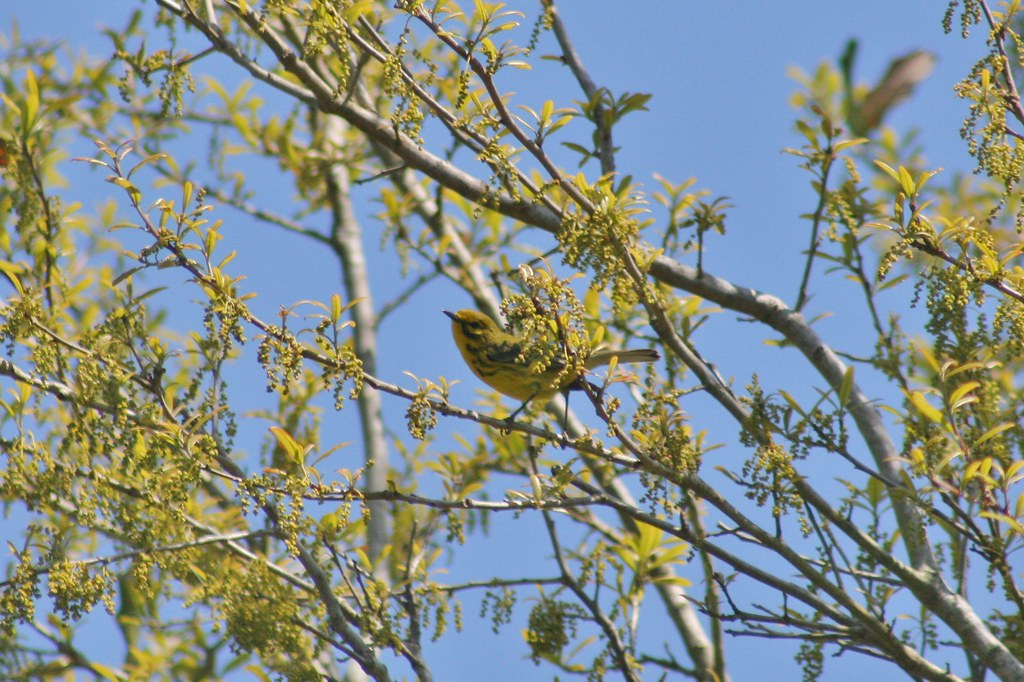 |
| Prairie Warbler |
 |
| Ruby-throated Hummingbird at Red Buckeye |
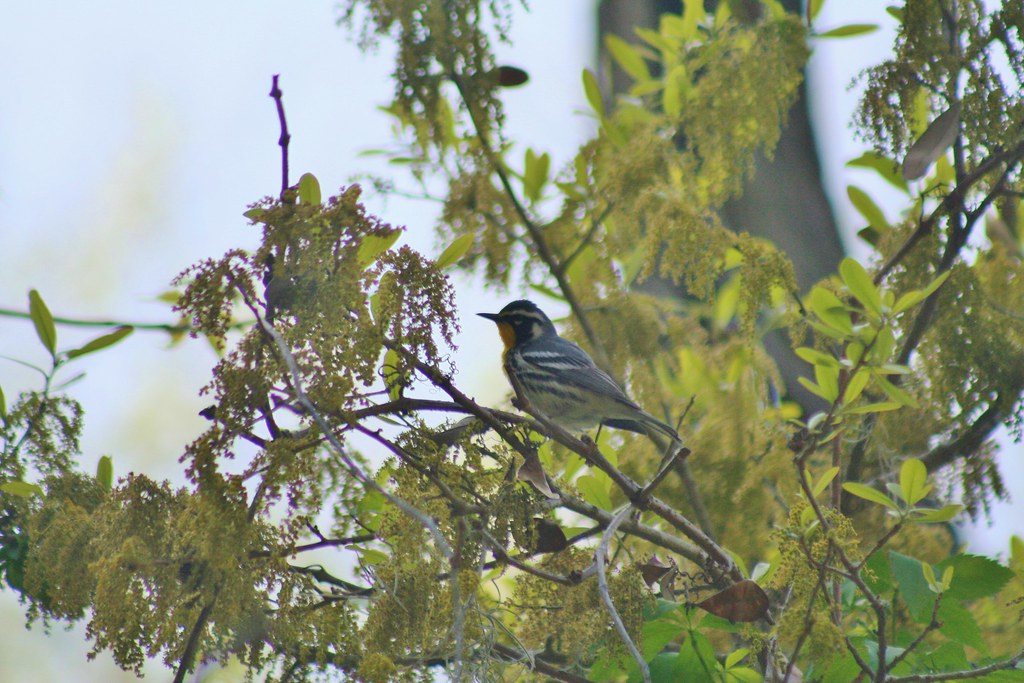 |
| Yellow-throated Warbler (Yellow lored) |
A few Common Yellowthroats returned, but they were skulkier than usual.
And last but not least, a new bird for me- my lifer Northern Waterthrush! I always love getting lifers at my patch!
I've also been hearing Hooded Warblers and Northern Parulas at the patch too!
And most recently, yesterday was another trip to Pee Dee, this time with a few other members of the CYBC. We heard a TON of migrants, but only saw a scant few-like these Prothonotary Warblers and American Redstart.
Next Saturday I'm going to be helping out with the Spring Count, which is basically the Christmas Bird Count, but in spring! Hopefully we'll see more than hear!
Thursday, April 9, 2015
Conquering a Nemesis
Nemesis Bird: a bird you have tried to see/observe multiple times without success. This bird may be common locally, or a recurring rarity, but every time you try for it, you fail to see it.
Note: I'm currently in Myrtle Beach, SC, and this all happened at Huntington Beach SP's feeders.
"HE'S HERE!"
The older couple paused, binoculars in hand, eagerly scanning the scrub. I strained to spot any motion, any indication that he hadn't flown off.
Conditioned by the cardinals at the feeder, I figured that this splash of red was nothing more. But wait- was that blue? An azure head contrasted the red, and my heart skipped a beat.
"I JUST SAW HIM, HE WAS BEHIND THAT OAK!" I sputtered, hoping they would believe me. Of course, he did not show himself. It wasn't enough. Some birders might count it, I guess. But this bird was special. I couldn't count it and leave it at that. I also eagerly wanted to show it to these people. But alas, it seemed to have flushed.
People came and went, and I asked almost every single one if they were looking for him too. Most stayed for a minute or two; a few hung around longer. But I waited. And waited. I watched the Red-winged Blackbirds attack the feeders in small gangs. I watched the bossy female cardinals squabble. I watched the egrets fly past in the distant marsh. I waited for the bird to come.
There.
In the tree sat a red bird. A glance- just another cardinal. Hold on, it was too small. There isn't enough red. Wait, is it him?
He perched somewhat conspicuously- to the casual observer, he was just another redbird. But I wasn't a casual observer, and I knew what I was looking at.
He made the handsome Chipping Sparrows, crisp with their neat little rusty caps and sharp eyeliner, suddenly turn into little LBJs. He dulled the scarlet of the many Northern Cardinals that surrounded him. With a flick of his verdant wings, he landed on the caged feeder, in full view.
"Whoa, whoa! Hey, come look at this!" I shouted to a random passerby. They probably thought I was crazy, but the girl with a camera, binoculars, and scope was a curious sight to begin with- seeing her get excited over something was special. I pointed it out to them. "That's the most beautiful bird in North America. Look through the scope!" (I had the scope preset on the feeders.)
You probably have guessed what this bird is. Arguably the most colorful bird on the East Coast, and maybe in all of North America, the Painted Bunting.
I swear, even these terrible photos bright up a room... how can you pack such a punch of color onto a five-inch bird?
If you haven't heard my tale of my nemesis, the Painted Bunting, I'll try to keep it short. I visit coastal SC and Florida almost every single year. And I've gone to Arkansas in mid-April, when they should be there. But did I see one? No, of course not. It isn't my nemesis for nothing.
I'll be honest. I did not feel a rush of adrenaline or excitement when I saw the bird; I felt pretty relaxed and my reaction was more of a mix of "About time" and "Neat. Cool bird." I kind of wished it did leave a good impression on me, like Hooded Warblers do, but it didn't. I hardly ever saw his green back and when he perched to feed, he sat in the shade. (Of course.)
One thing about him that I liked was that he was banded, and I love banded birds. I went inside the nature center and told them I had seen the bands on his legs. (In the picture above you may be able to see a purplish/pinkish band). They gave me a few sheets of paper with the info of the Painted Buntings banded there at Huntington Beach State Park.
Painted Bunting Observer Team, one of his bands appears to be a blue/pink split band, meaning he was banded in South Carolina.
Back to the bird. He sat at the millet feeder, perched like a king at the topmost perch. A few other birders and bird watchers came by and photographed him, but he was flighty. He bounded back into the myrtles, patiently waiting for the traffic to die down, but it still made him nervous. Eventually I watched him fly off behind the nature center, and that was the last glimpse I saw of the bird.
I hope to have more, better encounters with this species. It wasn't really soul-satisfying in the way when I see a Northern Pintail in the scope or hear the hauntingly beautiful song of a Hermit Thrush. This particular individual wasn't as confiding, but I'm hoping in the future he's a bit more cooperative!
Note: I'm currently in Myrtle Beach, SC, and this all happened at Huntington Beach SP's feeders.
"HE'S HERE!"
The older couple paused, binoculars in hand, eagerly scanning the scrub. I strained to spot any motion, any indication that he hadn't flown off.
Conditioned by the cardinals at the feeder, I figured that this splash of red was nothing more. But wait- was that blue? An azure head contrasted the red, and my heart skipped a beat.
"I JUST SAW HIM, HE WAS BEHIND THAT OAK!" I sputtered, hoping they would believe me. Of course, he did not show himself. It wasn't enough. Some birders might count it, I guess. But this bird was special. I couldn't count it and leave it at that. I also eagerly wanted to show it to these people. But alas, it seemed to have flushed.
People came and went, and I asked almost every single one if they were looking for him too. Most stayed for a minute or two; a few hung around longer. But I waited. And waited. I watched the Red-winged Blackbirds attack the feeders in small gangs. I watched the bossy female cardinals squabble. I watched the egrets fly past in the distant marsh. I waited for the bird to come.
There.
In the tree sat a red bird. A glance- just another cardinal. Hold on, it was too small. There isn't enough red. Wait, is it him?
He perched somewhat conspicuously- to the casual observer, he was just another redbird. But I wasn't a casual observer, and I knew what I was looking at.
He made the handsome Chipping Sparrows, crisp with their neat little rusty caps and sharp eyeliner, suddenly turn into little LBJs. He dulled the scarlet of the many Northern Cardinals that surrounded him. With a flick of his verdant wings, he landed on the caged feeder, in full view.
"Whoa, whoa! Hey, come look at this!" I shouted to a random passerby. They probably thought I was crazy, but the girl with a camera, binoculars, and scope was a curious sight to begin with- seeing her get excited over something was special. I pointed it out to them. "That's the most beautiful bird in North America. Look through the scope!" (I had the scope preset on the feeders.)
You probably have guessed what this bird is. Arguably the most colorful bird on the East Coast, and maybe in all of North America, the Painted Bunting.
If you haven't heard my tale of my nemesis, the Painted Bunting, I'll try to keep it short. I visit coastal SC and Florida almost every single year. And I've gone to Arkansas in mid-April, when they should be there. But did I see one? No, of course not. It isn't my nemesis for nothing.
I'll be honest. I did not feel a rush of adrenaline or excitement when I saw the bird; I felt pretty relaxed and my reaction was more of a mix of "About time" and "Neat. Cool bird." I kind of wished it did leave a good impression on me, like Hooded Warblers do, but it didn't. I hardly ever saw his green back and when he perched to feed, he sat in the shade. (Of course.)
One thing about him that I liked was that he was banded, and I love banded birds. I went inside the nature center and told them I had seen the bands on his legs. (In the picture above you may be able to see a purplish/pinkish band). They gave me a few sheets of paper with the info of the Painted Buntings banded there at Huntington Beach State Park.
Painted Bunting Observer Team, one of his bands appears to be a blue/pink split band, meaning he was banded in South Carolina.
| http://www.paintedbuntings.org/faq |
Back to the bird. He sat at the millet feeder, perched like a king at the topmost perch. A few other birders and bird watchers came by and photographed him, but he was flighty. He bounded back into the myrtles, patiently waiting for the traffic to die down, but it still made him nervous. Eventually I watched him fly off behind the nature center, and that was the last glimpse I saw of the bird.
I hope to have more, better encounters with this species. It wasn't really soul-satisfying in the way when I see a Northern Pintail in the scope or hear the hauntingly beautiful song of a Hermit Thrush. This particular individual wasn't as confiding, but I'm hoping in the future he's a bit more cooperative!
Subscribe to:
Comments (Atom)
